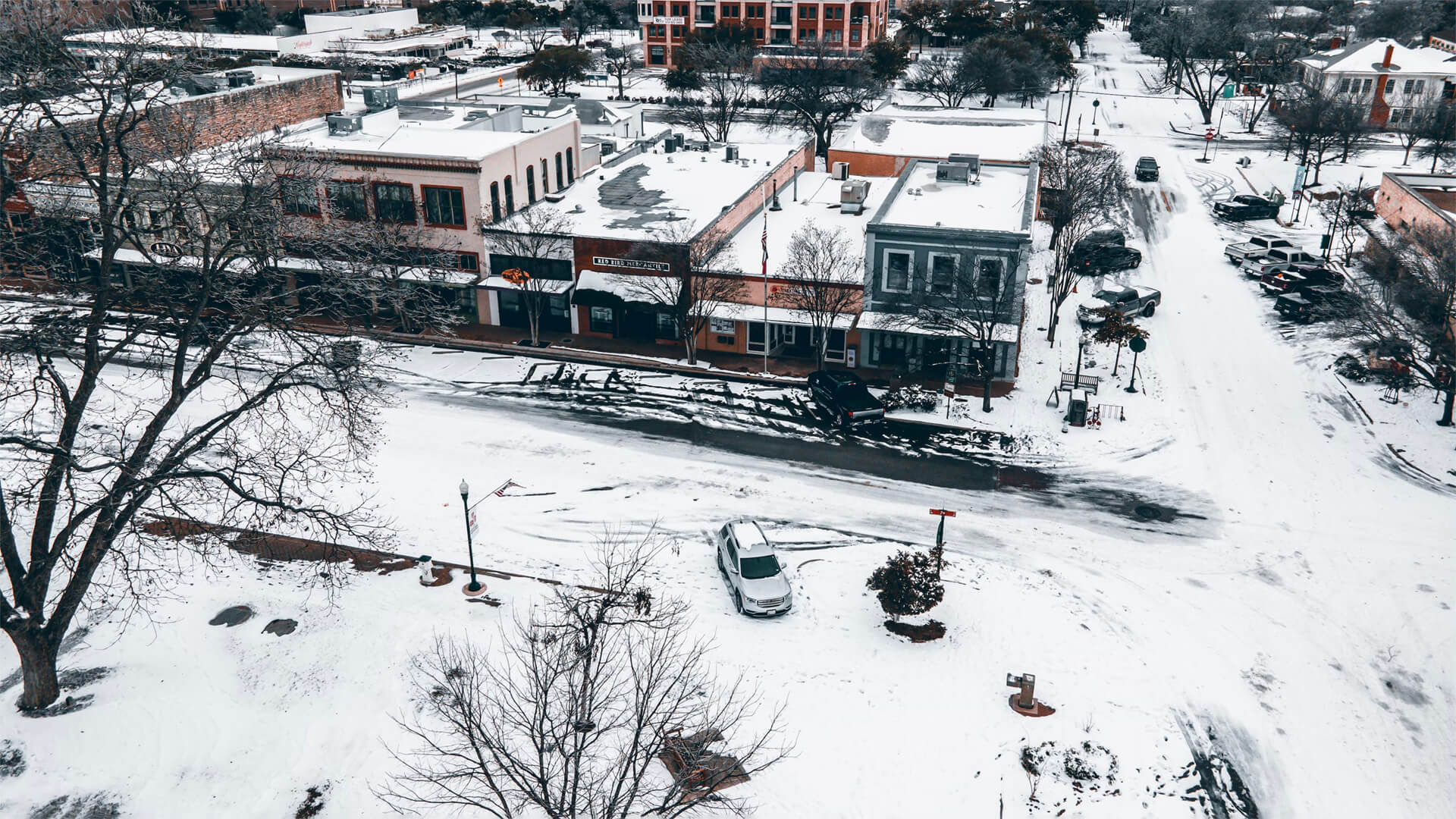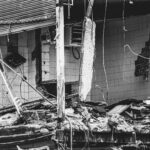Meet Michael Nayebi. He has been an integral part of the sausage-making process at Zeihan On Geopolitics for years and was core at my old world, Stratfor, before that. If my videos seem a little more scatterbrained than normal in recent days, it is because he has been physically unable to keep me out of trouble. Here is why…
On Tuesday, Jan. 31, arctic-like conditions swept across much of central Texas, including the Austin area. The ice storm left the roads impassable and caused trees and limbs to come crashing down, leaving residents across the city without power for days.
As you’ll see/hear in the video, Michael was stuck in the same predicament as countless others – a street riddled with trees, nowhere to go, no power and (the real gen-z deathblow) no internet.
When natural disasters like this occur, it’s essential to consider what/how supply chains and industries are impacted. So from our “boots on the ground,” here’s a look at the geopolitical fallout caused by this ice storm.
*Michael’s power was restored late on Friday, and his internet returned Monday morning. So the videos should be back to their normal levels of scatterbrainedness.
Prefer to read the transcript of the video? Click here
Join me on Feb. 17th for the webinar – Global Outlook: One Year into the Ukraine War.
We’ll dive into the global impacts the war has had on supply chains, agriculture, and much more. After my presentation we’ll have a Q&A portion to answer all those burning questions.
Here at Zeihan On Geopolitics we select a single charity to sponsor. We have two criteria:
First, we look across the world and use our skill sets to identify where the needs are most acute. Second, we look for an institution with preexisting networks for both materials gathering and aid distribution. That way we know every cent of our donation is not simply going directly to where help is needed most, but our donations serve as a force multiplier for a system already in existence. Then we give what we can.
Today, our chosen charity is a group called Medshare, which provides emergency medical services to communities in need, with a very heavy emphasis on locations facing acute crises. Medshare operates right in the thick of it. Until future notice, every cent we earn from every book we sell in every format through every retailer is going to Medshare’s Ukraine fund.
And then there’s you.
Our newsletters and videologues are not only free, they will always be free. We also will never share your contact information with anyone. All we ask is that if you find one of our releases in any way useful, that you make a donation to Medshare. Over one third of Ukraine’s pre-war population has either been forced from their homes, kidnapped and shipped to Russia, or is trying to survive in occupied lands. This is our way to help who we can. Please, join us.
CLICK HERE TO SUPPORT MEDSHARE’S UKRAINE FUND
CLICK HERE TO SUPPORT MEDSHARE’S EFFORTS GLOBALLY
TRANSCIPT
Howdy. For those of you who don’t know me, I’m Michael Nayebi-Oskoui and I am director of analysis here at Zeihan on Geopolitics. And unlike Peter, I am based out of Austin, Texas, where if you haven’t heard the news, we have been dealing with some cold weather. Not to be flip, but we’ve had one of the most significant ice storms in recent memory, at least since, you know, I’ve lived in Austin since the early 1980s. And with it, we’ve had a, if you can tell behind me, a pretty bad case of tree limbs falling down all around the city, which means that I’ve been without power since at least Wednesday morning, except for 5 minutes today, barely 5 minutes, at which point we heard the noise that no consumer or utility manager wants to hear, which was a cascade of transformers blowing up, which I thought was a good time as any, to discuss our national power grid and where these components come from.
Now, various elements of the grid, depending on where they are and how they’re used, come from various sources. But by and large, utility poles that are wooden are domestically grown. If you’re in the Pacific Northwest, they’re Douglas Fir here along the Atlantic Coast and parts of the southeast. It’s usually southern pine, cedar, rest of the country, but the cables, the coatings, the transformers, the other components are all part of a global supply chain and one that continues to face headwinds and one that potentially could see a shift back to domestic production within the U.S., or at least North America.
When it comes to the cables. Wire, copper and copper ore – predominantly produced out of Chile. But the wires that transfer power are made in a handful of countries. Very technical or high voltage wire typically comes out of the U.S. Germany or Japan, less so China and South Korea. But the coatings on the cables that we see are primarily products of the Gulf Coast refining sector.
So when we have very cold events in Texas, like we did in February of 2021, we see that the chemicals industry can face delays of months or up to a year when it comes to the more technical components of transmission. Let’s say the transformers that I heard blew up today. The steel, the insides again come from a complex, interconnected, global supply chain of advanced components and some that aren’t as high tech as you might expect. So a lot of insulating glass and ceramics.
The largest exporter globally is China, but the US makes a lot of these components domestically, as do the Japanese, the South Koreans, the Germans and to some extent Mexico, where they are interconnected with US manufacturing supply chains. But it’s not a wholly U.S. based supply chain. Up to 50% in transformers or components, at least in any given year, come from international sources, which means that supply chain managers domestically are facing the same challenges as suppliers in industries across the U.S. of finding reliable, affordable components, especially when it comes to transformers. Heading into the end of 2022, we saw that new development across the U.S., aging infrastructure, etc. sourcing managers were facing lead times of up to a year or, you know, triple, quadruple cost for industrial substation oriented transformers. And this is trickling down to the kinds of residential style, smaller capacity transformers like the ones that blew up outside of my neighborhood earlier this morning.
If you are an urban utility manager or a supplier looking for these components, you’re facing higher costs, longer lead times, greater delays. And it’s a combination of not just the COVID related supply chain issues that a lot of industries are still grappling with, you know, two or three years into the pandemic, but also some of the recent upheaval we’re seeing within EU and China.
The solution is not going to be a fast one. A lot of the specialized classic ceramics industries that are based in Germany are going to take expertise and capital to move elsewhere. The sheer capacity that’s represented by the Chinese industrial system is going to take time and cost to reshore elsewhere. But, you know, a lot of these components have analogs or related industries that are already operating in North America. So this is definitely the industry that I would like to see greater investment come online for within North America and manufacturing in coming years, as we look to eliminate risk and supply chain challenges that come from working with places that are increasingly as unreliable as China.




